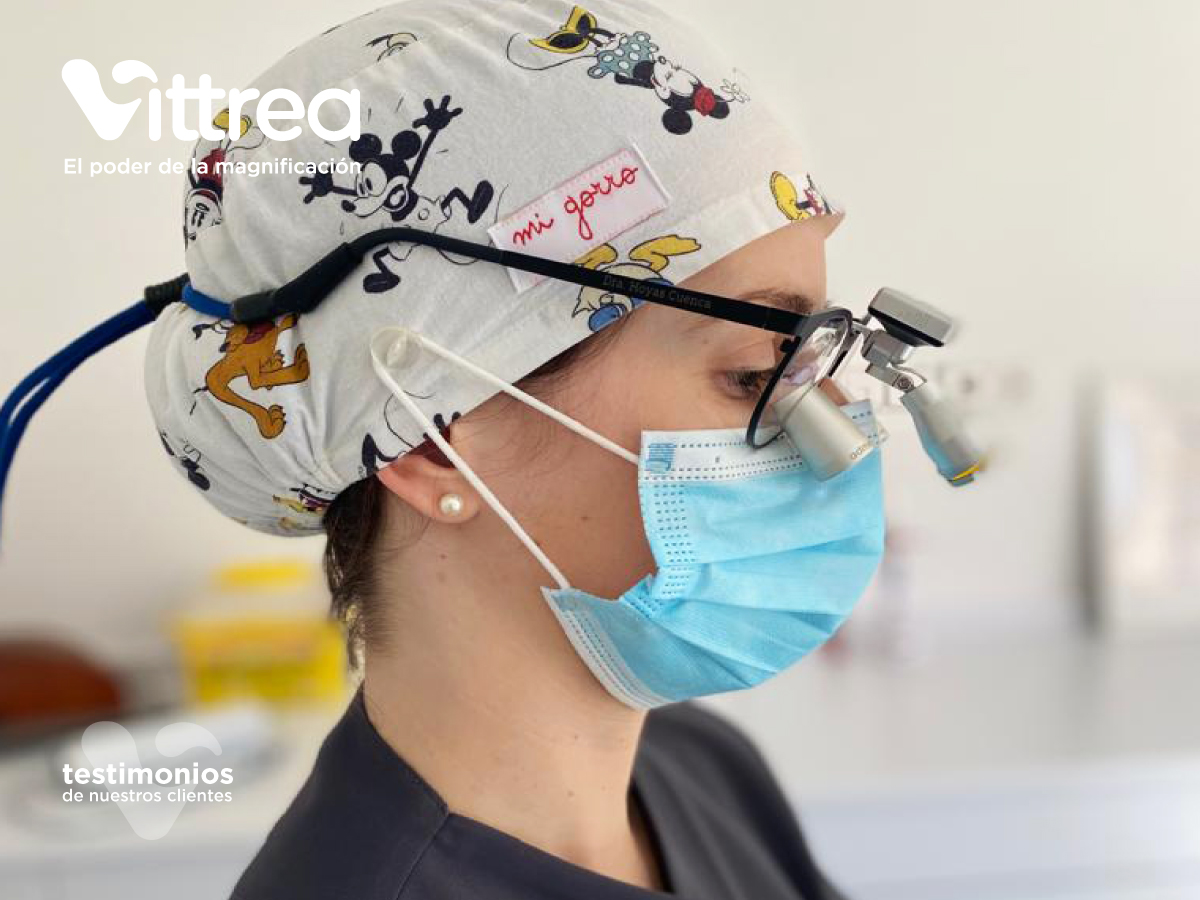
Interview with Dr. Blanca Hoyas, specialist in cosmetic dentistry and oral rehabilitation
Doctor Blanca Hoyas completed her studies at the Catholic University of Valencia. She always knew she wanted to study something related to health, so she chose dentistry. She discovered a huge passion for dental work, which now prevents her from pursuing another profession.
After finishing Dentistry, she pursued the specialty of Dental and Oral Rehabilitative Aesthetics, which allows her to stay up-to-date on minimally invasive treatments. She currently practices in Dénia.
In addition to her passion for dentistry, she dedicates her free time to sports, music, and being with her dog. She enjoys spending quality time with friends and family.
She recently incorporated the Galileo 3.2X loupes into her clinical practice, as they allow her to meet her primary needs for magnification, especially during procedures that require greater depth without compromising the visual field.
Interview with Dr. Blanca Hoyas
Dr. Hoyas, since when have you been using magnification and why did you start? What type of loupes have you used so far?
I met the Víttrea team about two years ago. I have been using their brand for about eight months now. I decided to buy them because they had been recommended to me by people I trust a lot when it comes to work. I bought the Galileo 3.2X loupes.
What advantages do you highlight from the use of loupes and headlights? How does it affect your work?
In the daily clinic routine, we have to see many mouths. Each person is different, and sometimes to achieve good vision, we end up adopting bad postures for long periods, so the use of loupes has been an incredible improvement in visualizing the work field, without having to strain either the vision or the position.
What advice would you give to a professional who is considering starting to work with dental loupes? What magnification would you recommend starting with in your sector?
I would tell them to enter without hesitation with you, as the adaptation is instantaneous, it doesn’t cause dizziness or distort anything. They should start with a low magnification to see more than one tooth to not lose important references in aesthetics; if it’s for other specialties, they could start with something else.
“
The use of loupes has been an incredible improvement in visualizing the work field without having to strain either the vision or the position.
”
What factors did you consider when choosing your latest loupes? What type of magnification did you choose and why?
I wanted loupes that were comfortable and not too heavy. I chose an “intermediate” magnification to try.
Do you use loupes in all the treatments you perform?
As of today, yes. I’m gradually using them in more treatments. Once you try and see with them, there’s no turning back!
What advice would you give to a colleague who is starting to use magnification?
Start with simple tasks and gradually feel free to use it in all your cases. It’s an investment that changes your day-to-day work.
Thanks to Dr. Hoyas for her testimony and for trusting Víttrea to incorporate the Galileo 3.2X loupes into her clinical procedures.
If you are also considering incorporating magnification into your daily clinic or operating room routine, we have a team of optometrists and product specialists who will advise you without obligation.
Contact us by email at hola@vittrea.com or call our customer service phone, 984 491 808.
